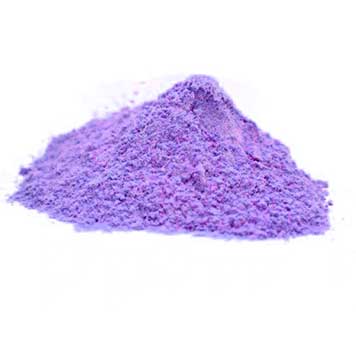
glacial acetic acid 99
Glacial Acetic Acid Properties, Uses, and Safety Considerations
Glacial acetic acid, often referred to as ethanoic acid, is a colorless liquid that possesses a pungent and distinctive vinegar-like odor. With the chemical formula CH₃COOH, it is a key organic compound widely utilized in various industries. The term glacial refers to its ability to solidify at temperatures below 16.6°C (62°F), forming a crystalline structure reminiscent of ice. This article explores the properties, applications, and safety considerations associated with glacial acetic acid.
Properties of Glacial Acetic Acid
Glacial acetic acid has a density of 1.05 g/cm³, making it denser than water. It is highly soluble in water, meaning that it mixes readily to form a homogeneous solution. The boiling point of glacial acetic acid is approximately 118°C (244°F), while its melting point is around 16.6°C (62°F). This compound is classified as a weak acid, which means it only partially dissociates in an aqueous solution. However, despite being termed a weak acid, it can be quite corrosive and reactive under certain conditions.
Applications of Glacial Acetic Acid
Glacial acetic acid finds extensive use across multiple industries due to its versatile chemical properties. One of its primary applications is in the production of various chemicals, including acetic anhydride, acetate esters, and various plastics. These derivatives are essential in manufacturing textiles, food preservatives, and even pharmaceutical products.
In the food industry, glacial acetic acid is often diluted to make vinegar, a widely consumed condiment. It is also used as a pH control agent and preservative, helping to enhance the shelf life of certain food products. The food-grade version is safe for consumption, albeit in diluted forms.
glacial acetic acid 99

Another major area where glacial acetic acid is employed is in the synthesis of polymers, most notably polyvinyl acetate, which is used in adhesives and paints. Furthermore, it plays a crucial role in the textile industry as a solvent for dyes and as an agent for the finishing of fabrics to enhance color retention.
Glacial acetic acid is also important in laboratory settings, where it serves as a reagent in various chemical reactions. It can be used in the synthesis of numerous organic compounds and is commonly found in the preparation of buffer solutions in biological and chemical experiments.
Safety Considerations
Despite its various applications and benefits, glacial acetic acid poses certain hazards, requiring careful handling. It is classified as a corrosive substance that can cause severe skin irritation and burns upon contact. Inhalation of its vapors can lead to respiratory irritation, and exposure may cause nausea and headaches. Thus, it is essential to use appropriate personal protective equipment (PPE), including gloves, goggles, and respiratory protection when working with this chemical.
In laboratory and industrial settings, proper ventilation is crucial to minimize exposure to vapors. Additionally, glacial acetic acid should be stored in tightly sealed containers in a cool, dry place away from incompatible materials, such as strong oxidizers which could lead to dangerous reactions.
Conclusion
Glacial acetic acid is a vital compound with a wide range of applications in industries ranging from food processing to pharmaceuticals and textiles. While it offers significant benefits, it is imperative to recognize the potential health hazards associated with its use. By adhering to safety protocols and employing protective measures, individuals and industries can harness the advantages of glacial acetic acid while minimizing risks. As ongoing research and innovation continue to unveil new applications, this compound is likely to remain an essential component in various sectors.
-
Understanding Synthetic Rubber OptionsNewsApr.27,2025
-
Trichloroisocyanuric Acid: Essential for Clean and Safe WaterNewsApr.27,2025
-
Sodium Dichloroisocyanurate: Key to Safe Water TreatmentNewsApr.27,2025
-
Sodium Acid Pyrophosphate: Essential in Modern Food ProcessingNewsApr.27,2025
-
Essential Water Treatment ChemicalsNewsApr.27,2025
-
Denatured Alcohol and Its Industrial UsesNewsApr.27,2025
-
The Versatile Uses of Sodium BicarbonateNewsApr.24,2025
Hebei Tenger Chemical Technology Co., Ltd. focuses on the chemical industry and is committed to the export service of chemical raw materials.
-

view more DiethanolisopropanolamineIn the ever-growing field of chemical solutions, diethanolisopropanolamine (DEIPA) stands out as a versatile and important compound. Due to its unique chemical structure and properties, DEIPA is of interest to various industries including construction, personal care, and agriculture. -

view more TriisopropanolamineTriisopropanolamine (TIPA) alkanol amine substance, is a kind of alcohol amine compound with amino and alcohol hydroxyl, and because of its molecules contains both amino and hydroxyl. -

view more Tetramethyl Thiuram DisulfideTetramethyl thiuram disulfide, also known as TMTD, is a white to light-yellow powder with a distinct sulfur-like odor. It is soluble in organic solvents such as benzene, acetone, and ethyl acetate, making it highly versatile for use in different formulations. TMTD is known for its excellent vulcanization acceleration properties, which makes it a key ingredient in the production of rubber products. Additionally, it acts as an effective fungicide and bactericide, making it valuable in agricultural applications. Its high purity and stability ensure consistent performance, making it a preferred choice for manufacturers across various industries.











